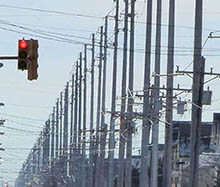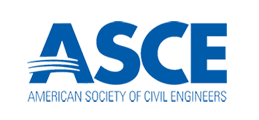Quick Pole, your complete solution to pole line assessments
Quick Pole is one of the industry's most capable and easy to use software programs for doing utility pole line design and analysis today. It offers the best value of any software tool on the market for similar capabilities and performs a structural analysis of many poles at the same time using the latest linear or nonlinear methods. Quick Pole also performs its own sags & tensions calculations, clearance tests, mid-span and on-pole separation tests, extensive reporting and many more code compliance tests against national and pole owner standards.
Sonideft has a long history of catering to the specific needs of both Pole Owners and those that wish to attach to poles owned by others (Pole Attacher):
Pole Owners
Highlights:
- The most advanced and easy to use software tool on the market today
- One of the most accurate solutions
- Best total value pole line analysis software tool
- Adheres to and enforces standards
- Continuously being updated to support the industry
Pole Attacher
Highlights:
- Enables quick assessments of pole lines and generation of supporting documentation
- Easy to use
- Supports many typical pole owner requirements
- Supports multiple scenarios
- Available training and support
Our industry is evolving. Quick Pole is keeping up!
 The process of determining the proper size of utility pole to use in different situations is a time consuming task for the utility industry. To make the process easier to use, various simplistic methods and rules of thumb have been developed by numerous organizations and people over the years. Most of these have their fundamental design roots in the 1940 to 1950 era when the best computing engine available was the slide-rule. In the majority of cases, these practices would always result in a "safe", but oversized, pole class recommendations.
The process of determining the proper size of utility pole to use in different situations is a time consuming task for the utility industry. To make the process easier to use, various simplistic methods and rules of thumb have been developed by numerous organizations and people over the years. Most of these have their fundamental design roots in the 1940 to 1950 era when the best computing engine available was the slide-rule. In the majority of cases, these practices would always result in a "safe", but oversized, pole class recommendations.
One of the disadvantages of these methods however, is that the more complicated and loaded a pole is, the more time consuming it became to use the process, and the more over-provisioned the final structural size recommendation became. There were many aspects of structural analysis which needed to be ignored because of the time required to deal with all the details. Many, many assumptions were made in order to facilitate calculations.
 The latest code standards in Canada and the US, as well as many other parts of the world, have evolved to the point where absolute defendable accuracy is required. The decision to install or add to utility poles in a particular manner is being questioned by the regulators, the legal system and the public at times. It is no longer defendable to use "Rules of Thumb" or other means that are not directly traceable back to solid Engineering Principles.
The latest code standards in Canada and the US, as well as many other parts of the world, have evolved to the point where absolute defendable accuracy is required. The decision to install or add to utility poles in a particular manner is being questioned by the regulators, the legal system and the public at times. It is no longer defendable to use "Rules of Thumb" or other means that are not directly traceable back to solid Engineering Principles.
Sonideft understands this requirement very well. We go to great lengths to expose our calculation results and methodologies to the critique of engineering professionals and welcome any opportunity to explain why we feel certain calculations are the most appropriate. As an example of our long-term commitment to quality, the precursor product to Quick Pole (Autopole) utilized a Finite Element Analysis Engine since 1995, almost two decades before any national codes mandated its use (CSA-2015).






